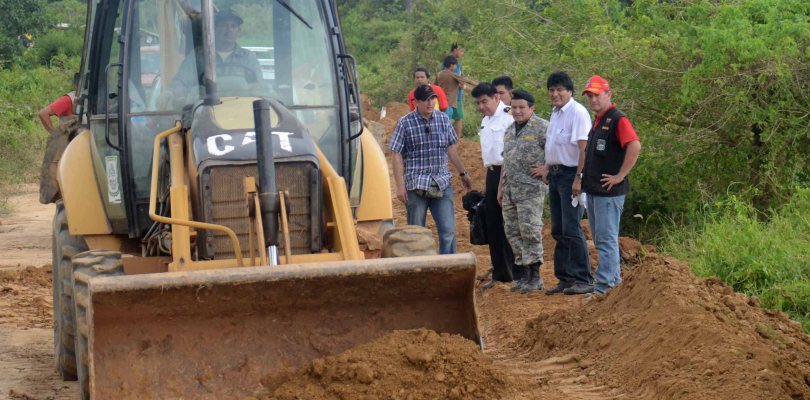Putting new pressure on a polarizing national conflict, the Bolivian government re-started construction work on the Villa Tunari–San Ignacio de Moxos highway, whose central segment would run through the Isiboro-Sécure National Park and Indigenous Territory. The construction, which began yesterday June 28, is on Segment Three of the highway, stretching 100 kilometers from San Ignacio de Moxos to Santo Domingo, a community within the Park. A joint Bolivian-Venezuelan unit of military engineers will carry out the project, using forty dump trucks. They currently project completion of the project by 2016, although such timelines are often unreliable. The segment is projected to cost US$144 million.
Bolivian Vice President Álvaro García Linera was on hand at the inauguration of construction and put a cultural spin on the project invoking the precolonial glory of Andean civilization. García Linera declared that he and President Evo Morales took
the decision to break with the history of abandonment and recover the hardworking and technically advanced culture of the ancestors who made lagoons, rivers, canals, and embankments and generated much wealth in this area before colonization, and this included integration by roads.
la decisión de romper con la historia de abandono y recuperar la cultura laboriosa y técnica de los antepasados, que hicieron lagunas, ríos, canales, terraplenes y generaron mucha riqueza en esta zona antes de la colonización, y esto comprende la integración caminera.
The starting of construction on Segment Three is part of a broader push to complete the entire highway, whose three parts are in different states.

| Segment One Tramo I |
Segment Two Tramo II |
Segment Three Tramo III |
| Villa Tunari–Insinuta | Insinuta–Santo Domingo within TIPNIS | Santo Domingo–San Ignacio de Moxos |
| Construction started 2012 by AMVI and EBC | Prohibited by Law 180 | Construction started June 28 by binational Bolivian-Venezuelan military brigade |
Local opposition by indigenous communities and the prospect of accelerated deforestation led to two national marches against the highway in 2011 and 2012 and the suspension of construction on the middle of those segments. All work on the other segments was suspended for two reasons: Brazil’s development bank BNDES froze funds for the project and Bolivia expelled the construction contractor OAS (also from Brazil) from the country.
In 2012, the government generated a new contract for Segment One and awarded it to Asociacion de Mantenimiento Vial I (AMVI) and Empresa Boliviana de Construcción (EBC). AMVI is a newly created firm owned collectively by the Villa Tunari coca growers, while EBC is a state-owned construction company. Three years of construction have laid a complete foundation of the 47-km Segment One, while much laying of pavement remains to be done. Altogether, the goverment will have invested nearly $200 million in constructing the outer segments, but the vast majority of that money would go to Segment Three and still remains to be spent. This is of vital importance since proposed alternative routes don’t involve using Segments One and Three at all. Every day that passes, more sunk costs tilt the government’s future decisionmaking towards driving the highway through the heart of Isiboro–Sécure.



Reblogged this on Indiĝenaj Inteligenteco.
LikeLike
[…] Bolivian-Venezuelan Military construction team begins work on TIPNIS highway […]
LikeLike
[…] Military construction team begins work on TIPNIS highway. Carwil without Borders. https://woborders.blog/2015/06/29/bolivian-venezuelan-military-construction-team-begins-work-on-tipn…. Consultation : 16 mars 2017.Conectas. Direitos Humanos. Denúncia da Sociedade Civil ao BNDES por […]
LikeLike